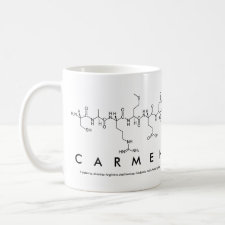
Authors: Diñeiro Y, Menéndez MI, Blanco-López MC, Lobo-Castañón MJ, Miranda-Ordieres AJ, Tuñón-Blanco P
Article Title: Computational predictions and experimental affinity distributions for a homovanillic acid molecularly imprinted polymer.
Publication date: 2006
Journal: Biosensors and Bioelectronics
Volume: 22
Issue: (3)
Page numbers: 364-371.
DOI: 10.1016/j.bios.2006.03.027
Alternative URL: http://www.sciencedirect.com/science/article/B6TFC-4K5HWCG-2/2/91fbf6ed67121473c2eddcf3842d32ab
Abstract: Density Functional Theory calculations have been used to select, among a set of chemicals traditionally used in the formulation of non-covalent molecularly imprinted polymers (MIPs), the best functional monomer and porogenic solvent for the construction of a recognition element for the dopamine metabolite homovanillic acid (HVA). Theoretical predictions were confirmed through batch binding assays and voltammetric detection. The computational method predicts that trifluoromethacrylic acid and toluene are the monomer and solvent rendering the highest stabilization energy for the pre-polymerization adducts. HVA-MIP prepared using this formulation gives rise to a binding isotherm that is accurately modelled by the Freundlich isotherm. The binding properties of this polymer were estimated using affinity distribution analysis. An apparent number of sites of 13 μmol g-1 with an average affinity constant of 2 x 104 M-1 was obtained in the concentration window studied
Template and target information: homovanillic acid, HVA
Author keywords: Molecularly imprinted polymers, computational design, homovanillic acid, Binding isotherms



Join the Society for Molecular Imprinting

New items RSS feed
Sign-up for e-mail updates:
Choose between receiving an occasional newsletter or more frequent e-mail alerts.
Click here to go to the sign-up page.
Is your name elemental or peptidic? Enter your name and find out by clicking either of the buttons below!
Other products you may like:
 MIPdatabase
MIPdatabase









